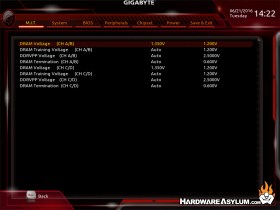

- #N52te editor onboard configuration how to
- #N52te editor onboard configuration install
- #N52te editor onboard configuration serial
- #N52te editor onboard configuration drivers
- #N52te editor onboard configuration code
Seeing how others have said theirs works, maybe someone can help me with mine.ĭoes anyone else have a Belkin n52te that works with Windows 7, and what exactly did you do to make it work? I'm out of ideas, but I've really enjoyed using it for gaming on my old system, and I really want to make it work on my new system. I have tried different USB ports on the front and back of my system. I have the latest firmware (1.04) from the Belkin web site I flashed it back when I was using it on my XP system. I can open the n52te Editor, but it says the device is not plugged in.
#N52te editor onboard configuration install
They install fine on the Windows 7 system.
#N52te editor onboard configuration drivers
I have the latest drivers (2.1.2) from the Belkin web site. Also, many people say that if it works for Vista, that there is no reason for it not to work for Windows 7. However from searching the internet it seems that the n52te works fine in Windows 7 for many people. I called the company and they said they are working on new drivers for Windows 7. When I plug it back into my old XP system it still works perfectly.Īfter searching the Belkin Support site, it turns out that Windows 7 is not a supported operating system for the n52te. One of the USB devices attached to this computer has malfuntioned, and Windows does not recognize it." When I plug in the n52te to my Windows 7 system, it gives an error message, "USB Device Not Recognized. I recently bought a new system which has Windows 7. 2008 and it has always worked perfectly for me on my Windows XP system.
#N52te editor onboard configuration code
Although it sadly doesn’t share actual code snippets, it said “Defines are provided of form PIN_Pxn, where x is A, B, or C, and n is a number 0-7”.I got my Belkin n52te in Dec. Having learned from the testing that the megaTin圜ore website contains a wealth of information, I started looking there, and quickly found the section about “How to refer to pins”. I therefore had to figure out the pin number on our board connected to the LED. Only the pin connected to power VCC and ground GND are fixed. Thankfully, many pins can be programmed to take on different functions. However, I already knew that on our boards things were different, because the schematic that we followed had switched the default TX and RX pins to their alternate positions. In that example it uses pin number 7 ( int led_pin = 7 ). During instruction day at the lab, Henk showed an example of a tiny script to make the LED go on and off after specific intervals. I was really eager to start with my LED, to make it blink.
#N52te editor onboard configuration serial
I should not forget that the Programmer should be set to Serial Port and 4.7k, otherwise you could end up seeing only java.nullExceptionError type results being returned when trying to upload a program to the board.I set the Port to my UPDI (being D30A3T7I).I set the Board under Tools to ATtiny412, which updates a whole array of things.I opened the Arduino app and started a new file. I’d already installed both of these two weeks ago when testing my board.

This is generally easiest to pick up while using the Arduino IDE, combined with the megaTin圜ore board manager for it. It was now time to make the board do more and start tinkering with our own code. I had already tested my tiny hexagon board to run a simple echo program that returned whatever I typed.

Two weeks ago, during the Electronics Design week Henk had created a schematic that included an ATtiny412 microcontroller, an LED, button, phototransistor, and a UPDI and FTDI connection (and two resistors and a capacitor), which we’d all turned into an actual board. Showing a final result that I programmed on my board for the tl dr and hopefully showing you why the rest of this very long blog could be interesting to read (⌐■_■) The blinking frequency changes with the amount of light that the phototransistor senses Programming My Board
#N52te editor onboard configuration how to
This week the programming became real! After a brief (but not easy to get working) taste during the “Electronics Design” week to test my board, I now learned a lot more about how to program my board and make it do some fun and simple tasks, often involving the LED.


 0 kommentar(er)
0 kommentar(er)
